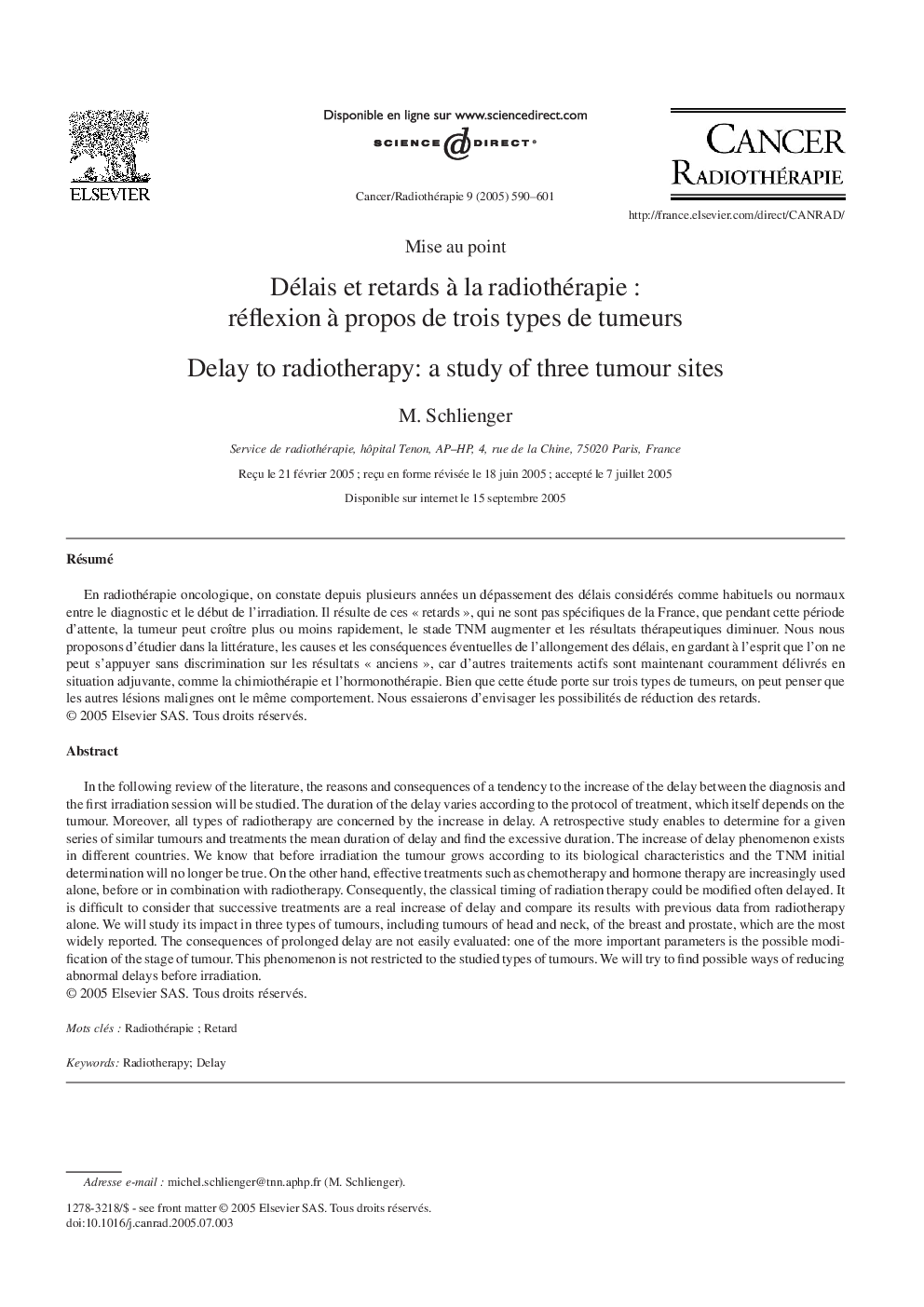| Article ID | Journal | Published Year | Pages | File Type |
|---|---|---|---|---|
| 10903051 | Cancer/Radiothérapie | 2005 | 12 Pages |
Abstract
In the following review of the literature, the reasons and consequences of a tendency to the increase of the delay between the diagnosis and the first irradiation session will be studied. The duration of the delay varies according to the protocol of treatment, which itself depends on the tumour. Moreover, all types of radiotherapy are concerned by the increase in delay. A retrospective study enables to determine for a given series of similar tumours and treatments the mean duration of delay and find the excessive duration. The increase of delay phenomenon exists in different countries. We know that before irradiation the tumour grows according to its biological characteristics and the TNM initial determination will no longer be true. On the other hand, effective treatments such as chemotherapy and hormone therapy are increasingly used alone, before or in combination with radiotherapy. Consequently, the classical timing of radiation therapy could be modified often delayed. It is difficult to consider that successive treatments are a real increase of delay and compare its results with previous data from radiotherapy alone. We will study its impact in three types of tumours, including tumours of head and neck, of the breast and prostate, which are the most widely reported. The consequences of prolonged delay are not easily evaluated: one of the more important parameters is the possible modification of the stage of tumour. This phenomenon is not restricted to the studied types of tumours. We will try to find possible ways of reducing abnormal delays before irradiation.
Keywords
Related Topics
Life Sciences
Biochemistry, Genetics and Molecular Biology
Cancer Research
Authors
M. Schlienger,
